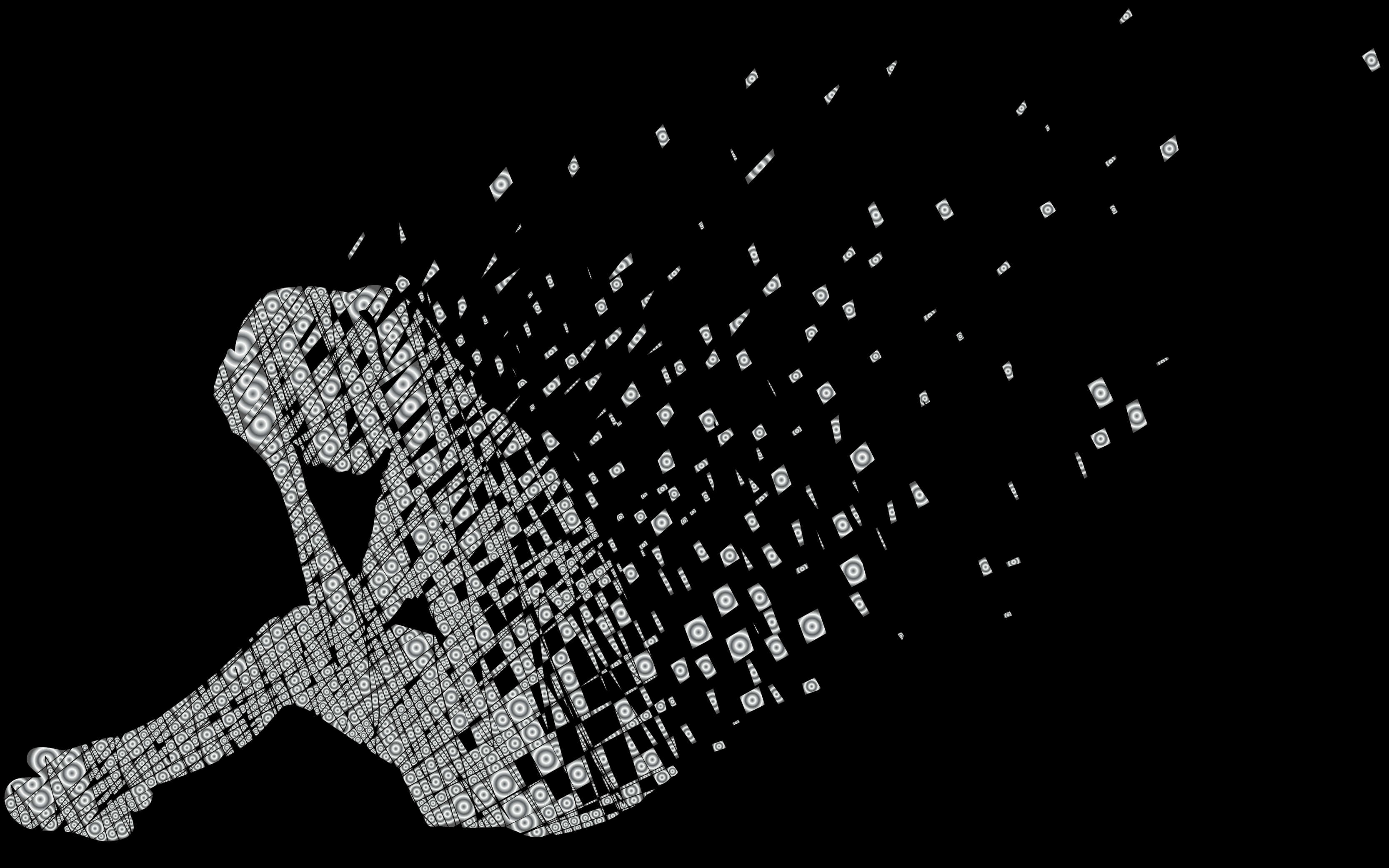Sadness is a normal part of life, but that doesn’t mean it isn’t difficult to cope with feelings of sorrow and unhappiness you may be experiencing. Whether you’re struggling with disappointment or you’re feeling deep anguish, know that you’re not alone. Most importantly, know that the pain you’re feeling right now most likely won’t last forever.
Understanding how to deal with sadness will allow you to process your emotions in a healthy way. Learn more about dealing with sadness in a healthy way here, as we discuss both the causes and how to cope.
Identify the Root of Your Sadness
Everyone feels sad at times, but we don’t always experience sadness for the same reasons. Sadness has many potential causes, and two people could react to the same event differently.
“Sadness doesn’t usually feel good, but it is a very normal emotion, often felt after loss, during a period of pain or transition, or when challenging hardships are on the forefront. It can be a very healthy and normative emotion that’s typically temporary. Certainly, feeling sadness can hurt, but suppressing our emotions can often backfire in an unhealthy way. Acceptance and expression often go hand in hand in terms of navigating an emotional time; getting support or connecting with a clinician can help you identify causes and offer a plan to move through it.”
If you’re dealing with sadness, your feelings could be caused by several things.
1. Relationship issues
Our relationships with family members, friends, coworkers, and romantic partners can trigger a spectrum of emotions. You might feel sad that a person you care about did something hurtful, you miss what a relationship used to be, or because a relationship ended. In some cases, sadness may be accompanied by feelings of loneliness.
2. Personal loss
Any sort of loss can result in sadness — whether you’ve lost a valued possession, missed out on a job opportunity, are navigating a divorce, have moved to a new area and left your support system, or are grieving a loved one.
It’s not unusual to experience grief after any type of loss. This is especially true when the loss is caused by death. In addition to sadness, when grieving a death, you might also struggle with feelings of guilt or anger.
3. Unhealthy thought patterns
Self-criticism, overgeneralization, obsessive thoughts, excessive jealousy, and other unhealthy thought patterns can influence how you respond to your life experiences. When you’re prone to negative thinking, you’re more likely to see events through a negative lens, which can lead to sadness.
4. Depression
Feeling sad doesn’t always mean that you’re depressed, but sadness is one of the core symptoms of clinical depression. When you’re depressed, you can feel like you’re sad for no reason. Depression is generally accompanied by other symptoms, including fatigue, loss of appetite, and irritability. Luckily, when it comes to how to treat depression, there are a variety of treatment options, so don’t suffer in silence if you suspect you might be depressed. Reach out to a mental health professional to learn how to manage depression symptoms.
5. Stress
While people often feel anxious or angry when they’re stressed, stress can also cause sadness, especially if you’re experiencing what’s known as chronic stress — that is, prolonged, constant, and unrelenting stress with no relief. Over time, stress can lead to burnout and can even cause major depressive disorder (MDD).
Regardless of what the cause of your sadness is, there are ways you can deal with it. What works for you may differ from what works for someone else, so don’t be discouraged if you must try multiple coping strategies before finding the one that helps you the most. Below are eight effective ways to deal with sadness.
How to Deal with Sadness: 8 Ways
While it’s a common emotion at times, feelings of sadness may begin to feel overwhelming. There are countless ways of coping with sadness, but not all of them are healthy. Sometimes it can be tempting to self-medicate or use other self-destructive tactics to try and mask or numb painful emotions like sadness. The truth is that unless you’re using healthy strategies, you’re never going to get to the root of your sadness, which means you probably won’t be able to truly move past it. This is why it’s so incredibly important to find healthy and constructive ways to deal with the sadness you’re feeling.
“Coping with sadness might seem impossible at times, but a little effort towards mindful and intentional behavior can be hugely impactful. Seek out comforting and healing activities and exercises to disrupt the lethargy that often accompanies sadness. Something as simple as connecting with a friend, spending time with your pet, exercising, or working with a trusted therapist can remind you that you might need some self care and a bit of kindness during sad times.”
If you’ve been feeling down, the following coping skills can help lift your mood and process your feelings.
1. Let yourself feel sad
You might be tempted to bottle up and ignore your feelings, but doing so will only make you feel worse in the long run. Instead of pushing your feelings aside, acknowledge your difficult emotions and accept that you’re feeling down. Does crying relieve stress and sadness? Absolutely. Don’t be afraid to have a good cry if you need to.
2. Practice self-care
It can be hard to take care of yourself when you’re unhappy. Unfortunately, if you neglect basic needs, like the need for sleep and a healthy diet, you might wind up feeling even worse.
Self-care is an important part of learning to acknowledge and validate your emotions. Further, research shows that little things, like the foods you eat, directly impact your emotions. So if you’re feeling down in the dumps, a nutrient-rich meal could lift your mood and give you energy (something you may be struggling with if you’ve been feeling sad lately).
3. Avoid unhealthy coping mechanisms
Junk food, shopping sprees, and alcohol might make you better in the short term, but these kinds of destructive behaviors will only temporarily numb your pain. Work to become more aware of unhealthy coping mechanisms and seek out healthy coping skills instead.
4. Reach out to loved ones for support
A big part of knowing how to cope with sadness is learning when to ask for help — which can be surprisingly difficult at times, especially if you’re feeling blue. Friends and family can provide you with love and support when you’re having a tough time. Whether you visit someone in person, send a text, or make a phone call, talking to others can keep your sad feelings from becoming too much to manage.
5. Spend time with your pet
While your connections with others can give you strength when you’re going through a difficult time, you don’t necessarily have to spend time with another person.
Playing with your pet or going for a walk together can also help cheer you up. If you don’t have a pet of your own, consider volunteering at an animal shelter. Studies show that animals improve symptoms of depression, and volunteering is another proven way to improve mood and counter feelings of loneliness, depression, and anxiety.
6. Find a healthy outlet for your feelings
It’s always important to express your feelings, whether they’re positive or negative. Working on an art project, journaling for mental health, or any other creative outlet you can think of that you enjoy can help you process sad emotions and make sense of how you’re feeling.
7. Look for ways to laugh
If you’ve been feeling out of sorts, laughter might be the last thing on your mind, but that saying is true: laughter really is the best medicine.
Research proves that laughing consistently is associated with a positive psychological effect. It isn’t always easy to laugh when you’re sad, but if you can find a way – even to just smile – your mood might start to improve. Watch a comedy you love, hang out with a funny friend, or listen to a standup comedian. Once you start laughing, you’ll almost always feel a bit of relief.
8. Connect with nature
When you’re unhappy, it can be challenging to find the motivation to do the things you once enjoyed. If you don’t feel up to your usual hobbies, step outside and spend some time in nature. Not only can spending time outside help you relax, but it also has health benefits and can instantly elevate your mood.
Knowing When It’s Time to Get Help
There are plenty of ways of dealing with sadness when you’re in a low mood, but if you’re struggling and feel like you can’t cope on your own any longer, it might be time to seek professional help. If you’ve been feeling sad for several weeks, and your mood doesn’t seem to be improving, your sadness may be a symptom of depression.
Need help figuring out if it’s sadness or depression? With the help of a therapist, you’ll be able to figure out if the negative emotions you’re feeling are more than just being sad. It might be depression, and with help, you’ll be able to learn how to deal with depression-related sadness healthily. While you might be feeling miserable or hopeless, it really is possible for you to get better and start enjoying life again.
Get Professional Help with Talkspace
Have you been having a hard time coping with sadness? Are you looking for help but not sure where to turn? Talkspace’s online therapy platform can help.
You might feel like your sadness will never go away, but there is a light at the end of the tunnel. The negative feelings you’re experiencing aren’t just something you need to learn to live with. Whether you need treatment that includes therapy or medication for depression (or both), or you’re just looking for some better coping strategies to overcome sadness, Talkspace can provide you with guidance and support.
Let Talkspace show you how to deal with sadness so you can begin to heal, starting today.
Sources:
1. Mouchet-Mages S, Baylé F. Sadness as an integral part of depression. Dialogues Clin Neurosci. 2008;10(3):321-327. doi:10.31887/dcns.2008.10.3/smmages. https://www.ncbi.nlm.nih.gov/pmc/articles/PMC3181878/. Accessed August 23, 2022.
2. Richter-Levin G, Xu L. How could stress lead to major depressive disorder?. IBRO Rep. 2018;4:38-43. doi:10.1016/j.ibror.2018.04.001. https://www.ncbi.nlm.nih.gov/pmc/articles/PMC6111061/. Accessed August 23, 2022.
3. Huang Q, Liu H, Suzuki K, Ma S, Liu C. Linking What We Eat to Our Mood: A Review of Diet, Dietary Antioxidants, and Depression. Antioxidants. 2019;8(9):376. doi:10.3390/antiox8090376. https://www.ncbi.nlm.nih.gov/pmc/articles/PMC6769512/. Accessed August 23, 2022.
4. Chakma S, Islam T, Shahjalal M, Mitra D. Depression among pet owners and non-pet owners: a comparative cross-sectional study in Dhaka, Bangladesh. F1000Res. 2021;10:574. doi:10.12688/f1000research.53276.1. https://www.ncbi.nlm.nih.gov/pmc/articles/PMC8383123/ . Accessed August 23, 2022.
5. Musick M, Wilson J. Volunteering and depression: the role of psychological and social resources in different age groups. Social Science & Medicine. 2003;56(2):259-269. doi:10.1016/s0277-9536(02)00025-4. https://pubmed.ncbi.nlm.nih.gov/12473312/. Accessed August 23, 2022.
6. Louie D, Brook K, Frates E. The Laughter Prescription. Am J Lifestyle Med. 2016;10(4):262-267. doi:10.1177/1559827614550279. https://www.ncbi.nlm.nih.gov/pmc/articles/PMC6125057/. Accessed August 23, 2022.
7. Franco L, Shanahan D, Fuller R. A Review of the Benefits of Nature Experiences: More Than Meets the Eye. Int J Environ Res Public Health. 2017;14(8):864. doi:10.3390/ijerph14080864. https://www.ncbi.nlm.nih.gov/pmc/articles/PMC5580568/. Accessed August 23, 2022.
Talkspace articles are written by experienced mental health-wellness contributors; they are grounded in scientific research and evidence-based practices. Articles are extensively reviewed by our team of clinical experts (therapists and psychiatrists of various specialties) to ensure content is accurate and on par with current industry standards.
Our goal at Talkspace is to provide the most up-to-date, valuable, and objective information on mental health-related topics in order to help readers make informed decisions.
Articles contain trusted third-party sources that are either directly linked to in the text or listed at the bottom to take readers directly to the source.





